Facebook has been one of the best marketing channels for growing an online business for the last 10 years. With the dramatic changes in search engines and the introduction of AI in search results, Facebook will become an even more important channel for advertisers.
The way to take advantage of Facebook’s massive audience for marketing purposes is through Facebook advertising.
In this post, I’ll explain how do Facebook ads work and what you need to consider when running paid campaigns on Facebook and Instagram.
What is Facebook Advertising?
Facebook advertising allows businesses to reach their target audience on Facebook and Instagram. With Facebook advertising, you can create ads to promote your products or services to specific groups of people based on their demographic characteristics (age, gender, location), interests, and behaviors.
When creating a Facebook ads campaign, you can choose the format of your ads (images, videos, text) and where you want your ads to appear on Facebook or Instagram.
Overall, Facebook advertising is an important pillar of Facebook marketing and an effective way for businesses to reach their target audience, build brand awareness, drive traffic to their website, and generate leads or sales.
What Can You Use Facebook Advertising For?
Facebook ads can effectively promote a wide range of products and services, but certain products and services tend to work particularly well. Here are some examples:
E-commerce products: You can create a product catalog on Facebook that includes all your products and then use dynamic ads to show personalized ads to people interested in your products.
You can also use Facebook retargeting to show ads to people who have already visited your website or added products to their cart. This can be a highly effective way to increase conversions, as people will see the exact products they viewed in the Facebook ads.
Information products: Facebook ads can also effectively promote information products, such as online courses, ebooks, and webinars. By promoting a lead magnet, such as a free ebook, you can capture and nurture leads over time with email marketing.
Services: You can promote a wide range of services, such as consulting, coaching, and marketing, by targeting people interested in your niche based on their demographic characteristics, interests, and behaviors.
Over the last two years, we’ve spent millions on Facebook ads for our clients and made 4X sales. Enroll in our Facebook Ads course to get our step-by-step blueprint.
How Do Facebook Ads Work?
Here is a quick overview of how Facebook ads work.
First, you must create a Facebook Business page and Ad account. You need both before you can start advertising on Facebook or Instagram.
Once you have these ready, the next step is to connect your website with Facebook by adding the Facebook pixel to your website and enabling conversion tracking.
Next, you can go to Facebook Ads Manager and launch your first Facebook campaign.
When creating a Facebook ad campaign, you can choose from six campaign objectives: increasing brand awareness, driving website traffic, increasing engagement (likes), generating leads, promoting an app, or increasing sales.
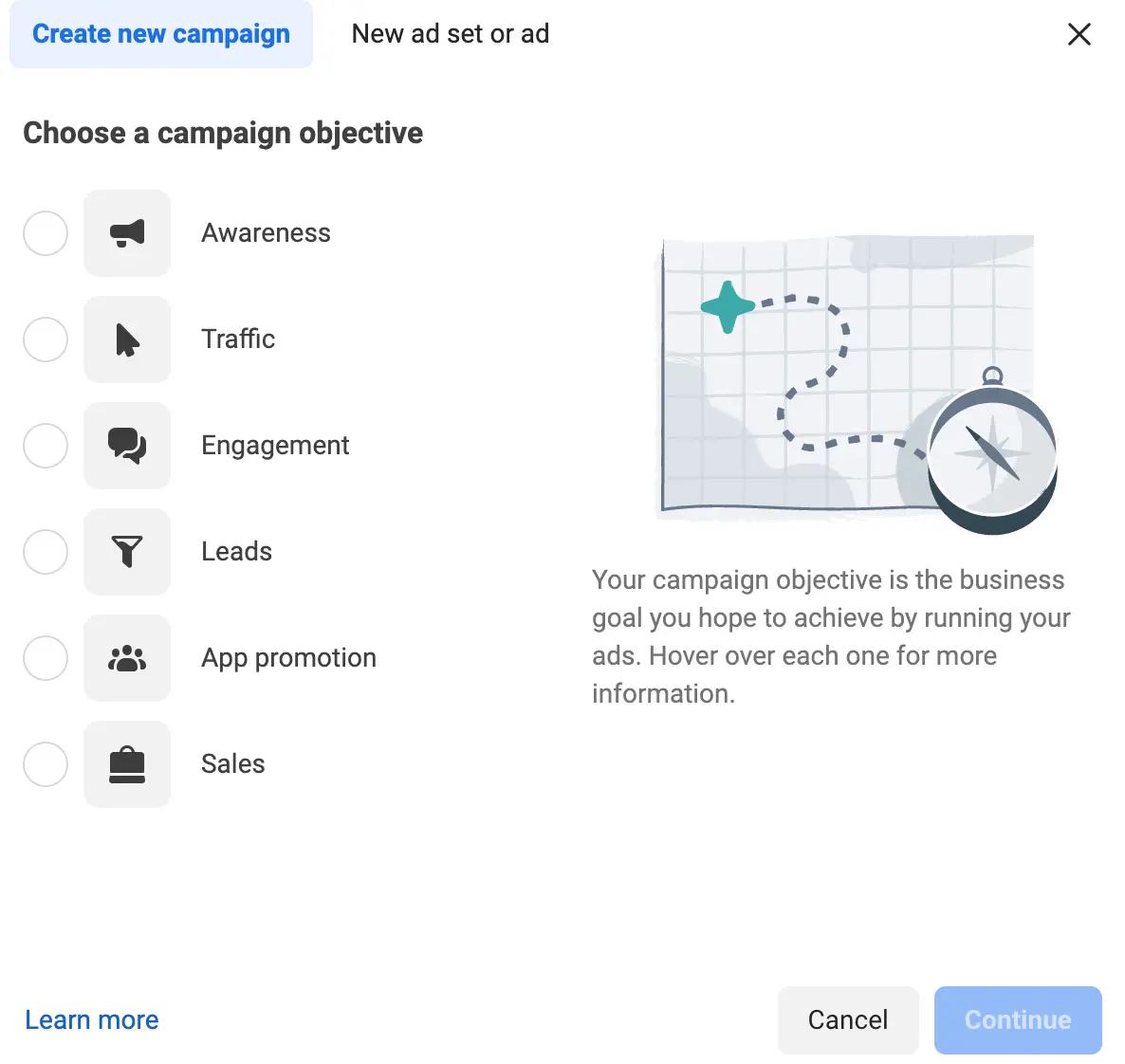
Based on your chosen objective, Facebook will optimize your ad delivery to reach the most relevant audience.
Within your campaign, you can create one or more ad sets, each with its target audience, budget, and schedule.
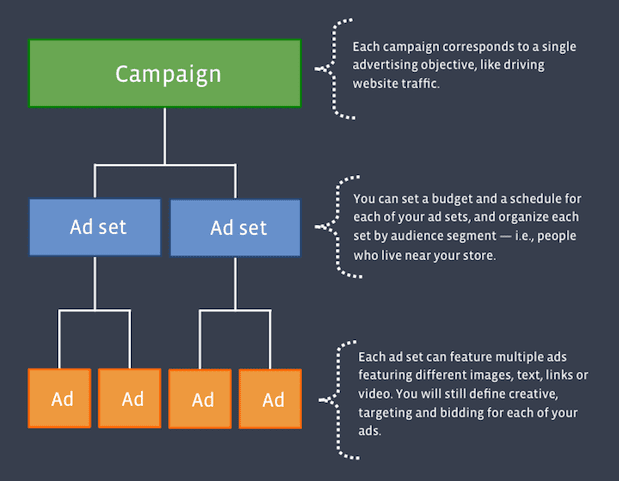
Facebook, through Audiences, provides advanced targeting options to help you reach specific groups of people, such as those who have shown interest in your products or services, interacted with your brand in the past, or matched your ideal customer profile.
Once you've created your ad sets, you can create your ads in various formats, such as image ads, video ads, and carousel ads.
You must provide a primary text, headline, description, and call-to-action for each ad.
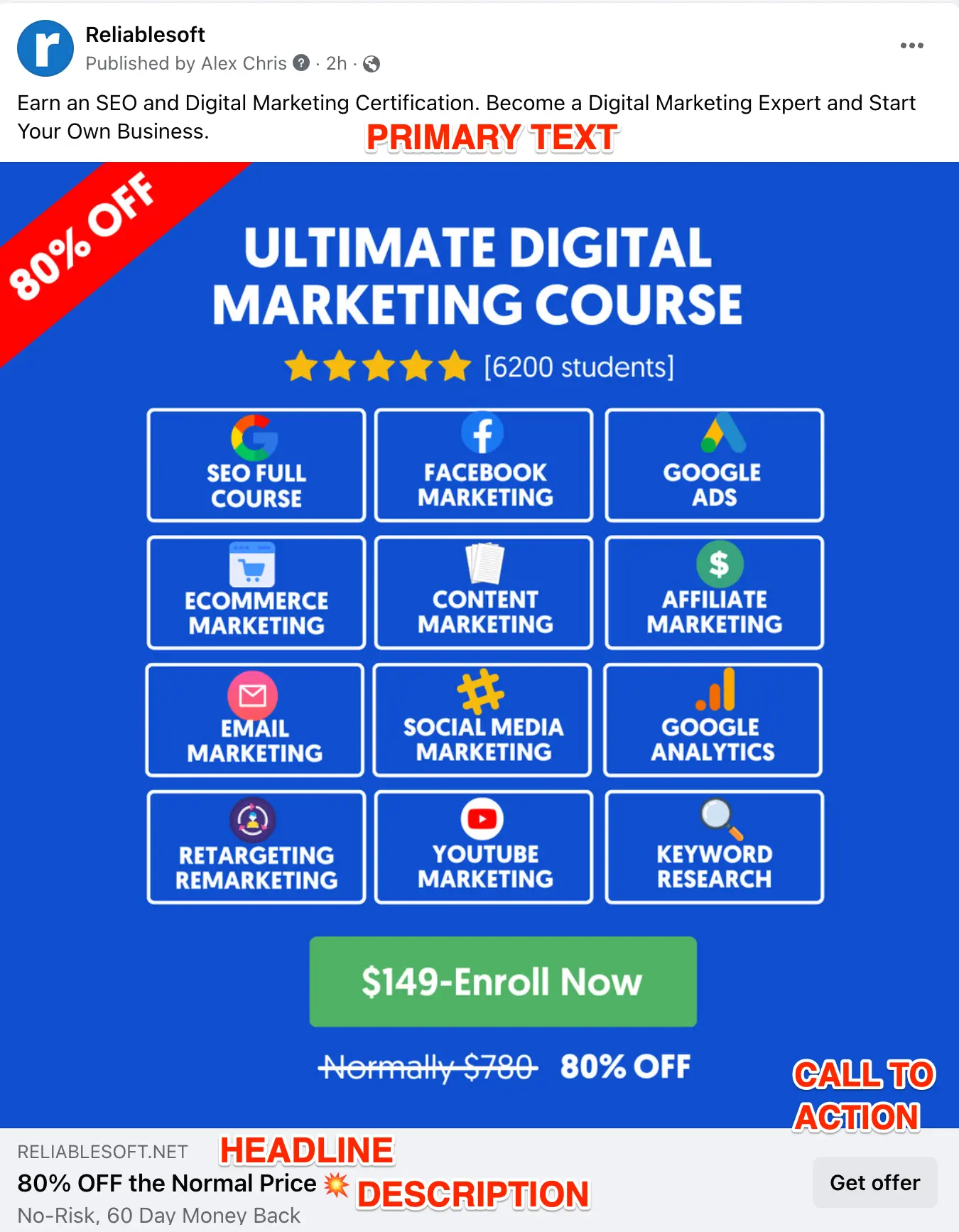
When your ads run, Facebook uses AI technology and machine learning to optimize ad delivery and reach the most relevant audience. This means that your ads will be shown to people most likely to take the desired action, whether clicking on your ad, visiting your website, or making a purchase.
Enrolling in a good course is the best way to learn how Facebook ads work and become an expert. We did our research to find the best Facebook Ads courses for this year.
Once you start a campaign, you can use Facebook’s reporting tools to help you measure the performance of your ads.
You can track metrics such as ad impressions, clicks, click-through rates, and conversions and use this data to adjust your ad campaigns and improve their performance over time.
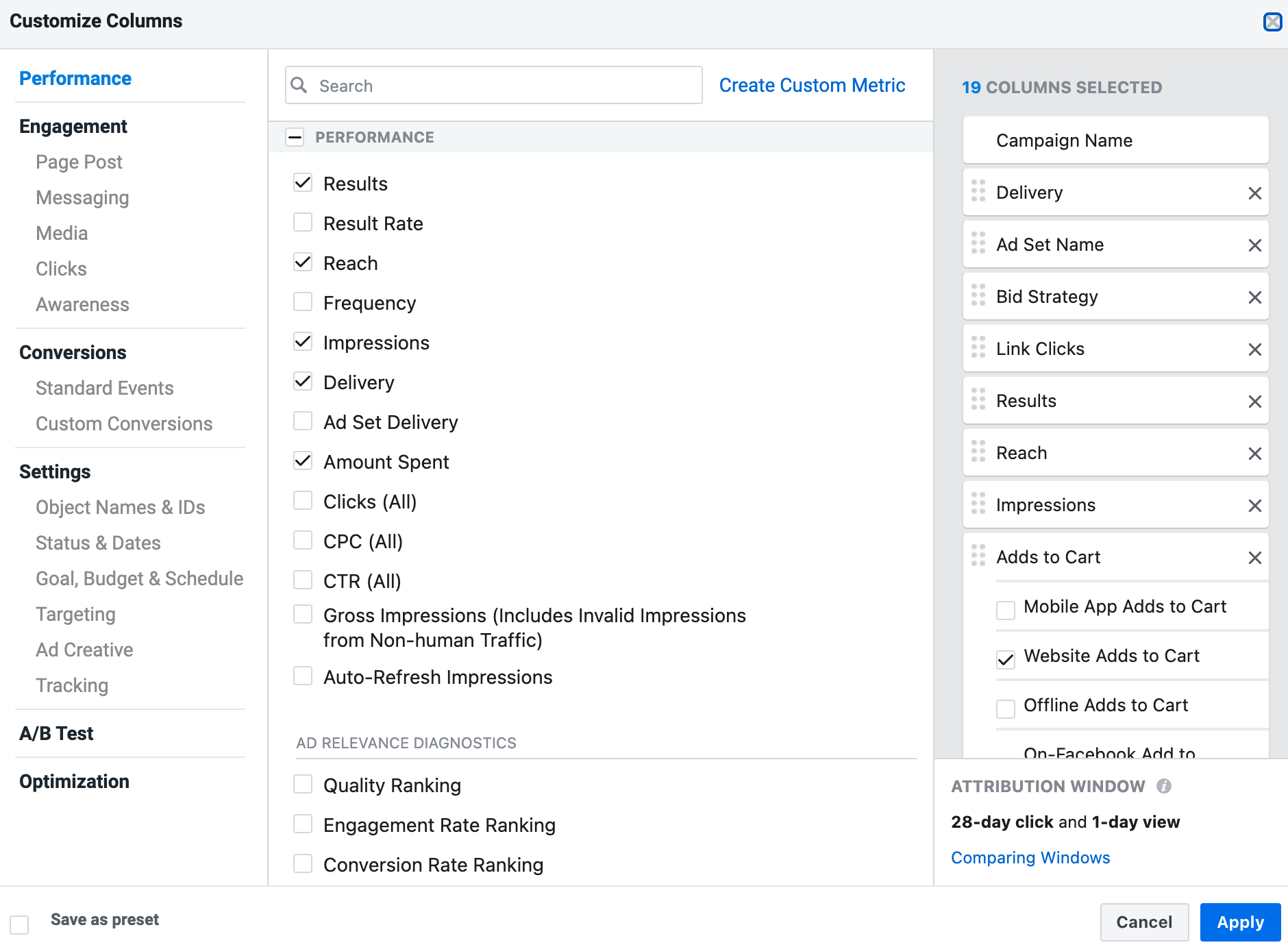
10 Top Tips for Creating Facebook Ads
Now that you know how Facebook Ads work, let’s review some best practices for creating Facebook ads.
- Get to Know Your Target Audience
- Use Facebook’s Lookalike Audiences
- Use Eye-Catching Visuals
- Use Social Proof
- Use All Possible Ad Placements
- Test Different Ad Formats
- Keep Your Landing Pages Consistent
- Always Use Retargeting Ads
- Monitor Your Results
- Use Promotions and Discounts
1. Get to Know Your Target Audience
Knowing your target audience is one of the most critical steps in creating effective Facebook ads. Understanding your potential customers' needs, preferences, and behaviors can help you create ad content that resonates with them and, ultimately, drives better results for your business.
To get started, it's essential to analyze the profile of your current customers. Look at the data you already have, such as purchase history, demographics, and website behavior, and use it to create a buyer persona or ideal customer profile.
This profile should include your customers' age, gender, location, interests, and pain points.
Once you clearly understand your target audience, you can use Facebook's targeting options to ensure your ads are shown to the most likely interested in your products or services. Facebook offers various targeting options, including demographics, interests, behaviors, and custom audiences.
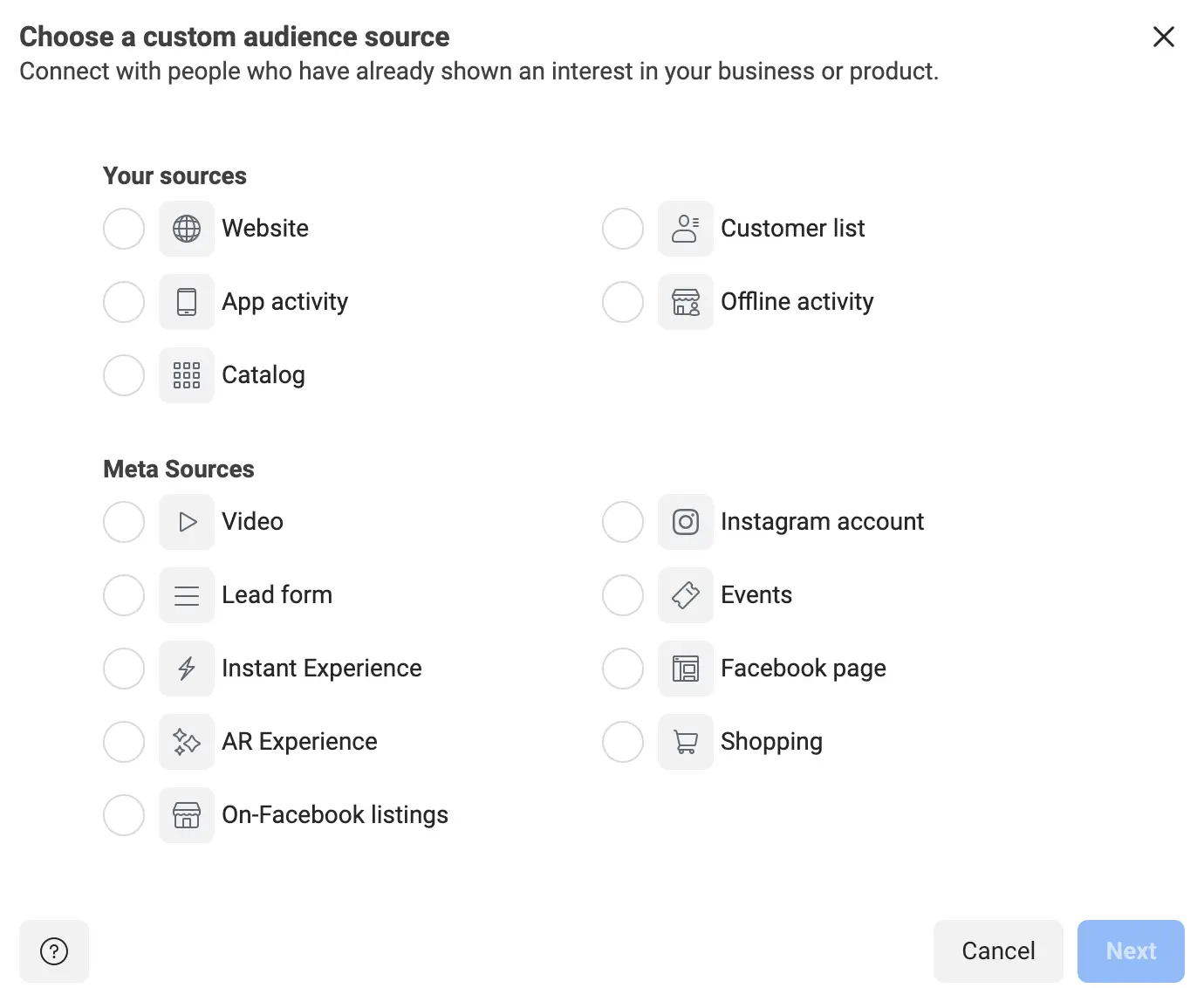
You can use your Google Analytics data to refine your targeting options if you already have a website.
Analyze the pages your customers visit on your website, their actions, and how long they stay on your site.
Use this information to create custom audiences on Facebook. This allows you to target people who have already interacted with your brand, such as visiting your website or engaging with your Facebook page.
By targeting these custom audiences, you can deliver highly relevant and personalized ad content that speaks directly to their needs and interests.
2. Use Facebook’s Lookalike Audiences
Lookalike audiences are an incredibly powerful tool for businesses wanting to expand their reach and find new customers.
By leveraging Facebook's machine learning algorithms, you can target people with characteristics similar to your existing customers, even if you don't know anything about them.
First, you must provide Facebook with a source audience to create a lookalike audience. This could be a custom audience you've already created, such as people who have purchased on your website, or a data file you've uploaded to Facebook, such as a list of email addresses.
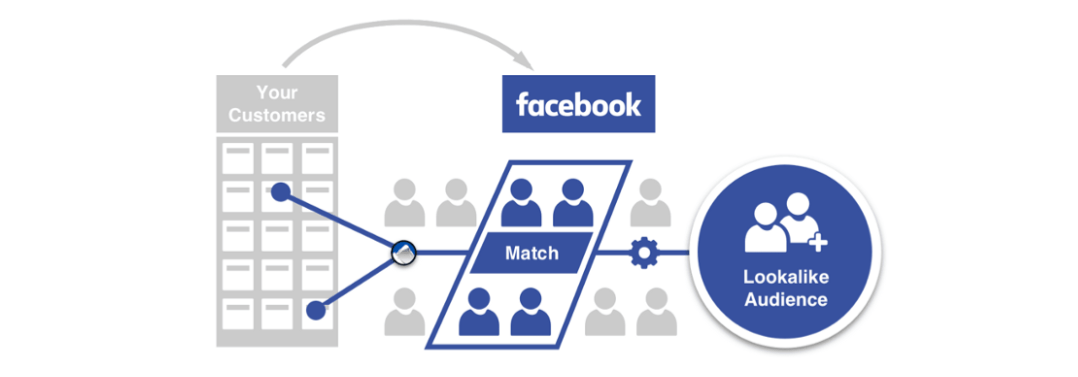
Facebook will then analyze the characteristics of this source audience, such as their age, gender, location, interests, and behaviors, and use this data to find similar people.
The resulting lookalike audience will be people who share similar characteristics to your source audience but may not have interacted with your brand.
This means that lookalike audience targeting is incredibly effective in expanding your reach and finding new potential customers likely to be interested in your products or services.
When creating your lookalike audience, it's important to consider the size of the audience you're targeting. If your lookalike audience is too broad, you may waste ad spend on people who are not a good fit for your business.
On the other hand, if your lookalike audience is too narrow, you may not reach enough people to make a meaningful impact. It's all about finding the right balance and testing and refining your targeting to ensure the best results.
Create lookalike audiences based on events with monetary value, such as Purchases, add-to-cart, and Initiate Checkout.
Use those audiences in the targeting section and exclude all people who have previously visited your website and those who have already converted.
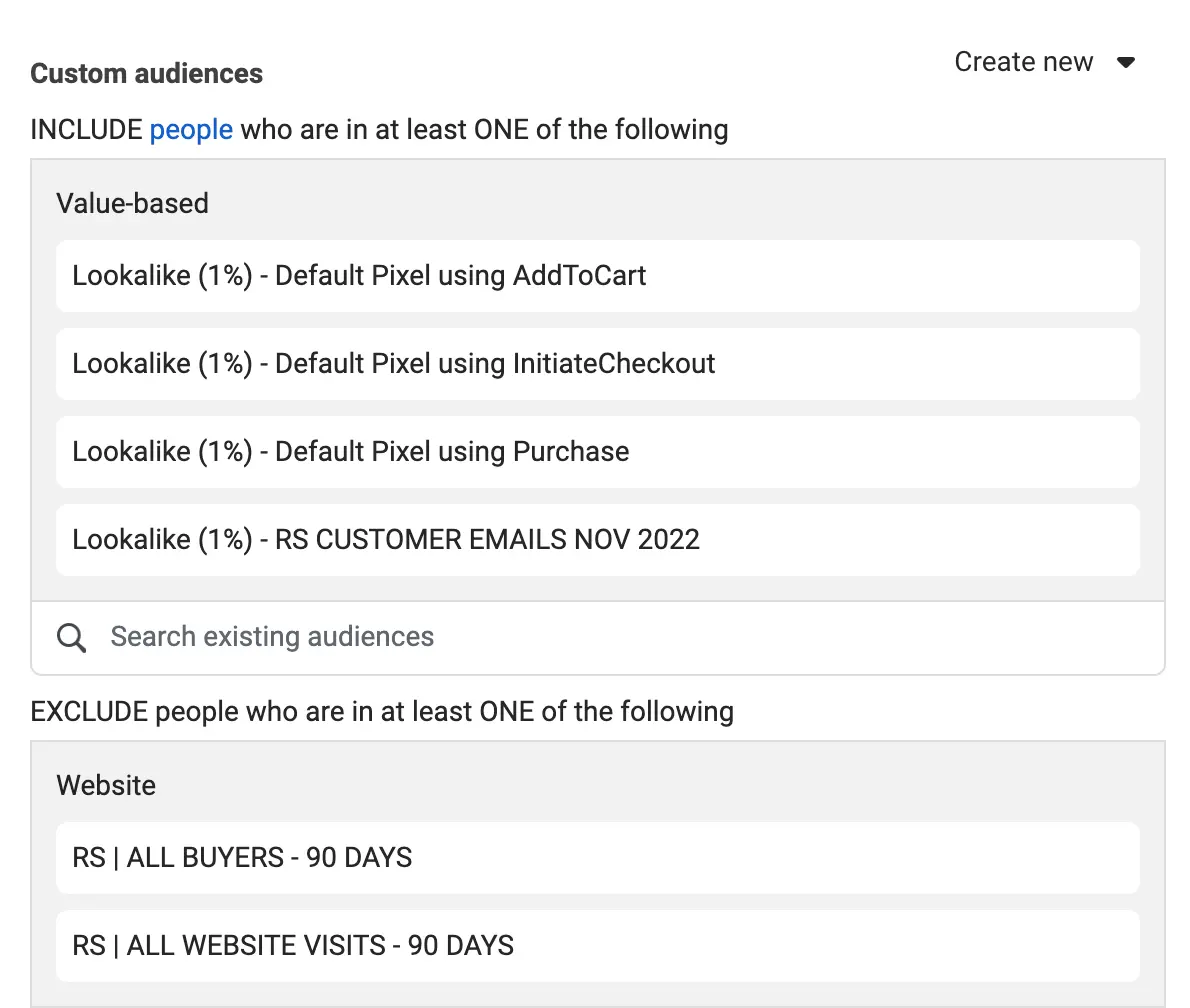
This will ensure that you're targeting new audiences that are completely aware of your brand but have the same profile as your existing customers, and this is a very powerful combination.
3. Use Eye-Catching Visuals
Visuals play a crucial role in the success of your Facebook ads. Since the platform is highly visual, your ad visuals can make or break your campaigns.
Creating visually appealing and attention-grabbing images or videos that stand out from the competition is important. You only have a few seconds to capture your audience's attention, so make them count.

When designing your ad visuals, remember that they should be relevant to your brand and the message you're trying to convey. Use high-quality images or videos that showcase your products or services in a visually appealing way. Avoid using low-quality images or generic stock photos that don't accurately represent your brand.
Facebook has specific guidelines for each ad type, and it's important to follow them to ensure that your ads are approved and shown to your target audience.
Keep your copy brief and to the point, using clear and concise language to communicate your message effectively.
It's also important to include a clear call-to-action that tells your audience what you want them to do, such as "Shop Now" or "Learn More." By combining strong visuals with clear and effective ad copy, you can create Facebook ads that grab attention and drive results for your business.
4. Use Social Proof
Social proof is a powerful marketing technique that can help build trust and credibility with your target audience. Incorporate social proof elements, such as customer testimonials, reviews, and ratings, into your Facebook ads.
This can help convince potential customers to purchase, as they see that others have had a positive experience with your products or services.
5. Use All Possible Ad Placements
When creating an ad set, you can choose where your ads appear. Make sure that you select the Advantage+ placements option. Facebook will allocate your budget across multiple placements based on where they will likely perform best.
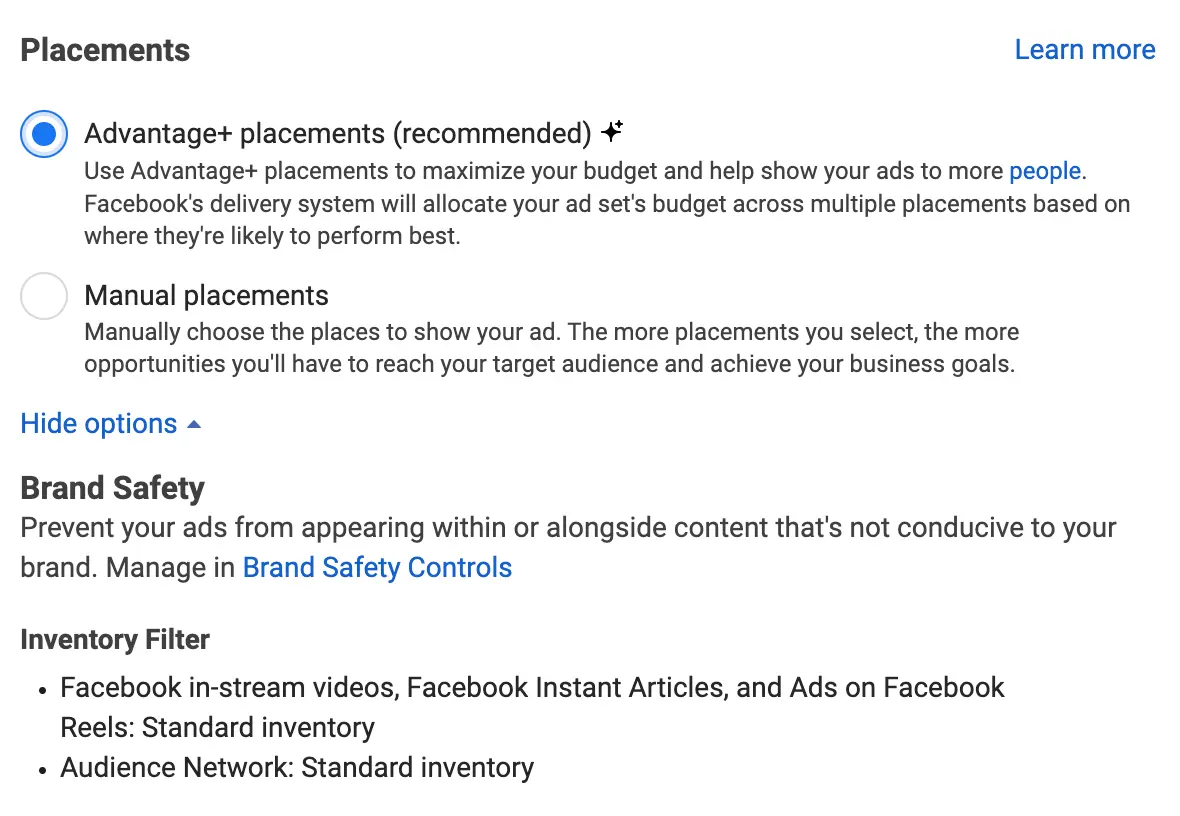
Next, ensure that you provide ads in all specified sizes. Facebook ads shown on the Facebook feed are square, while ads on Instagram have a different aspect ratio.
6. Test Different Ad Formats
Facebook offers various ad formats, such as image ads, video ads, carousel ads, and collections. Experiment with different formats to see what works best for your business.
To optimize your ad performance, perform A/B tests on different ad elements, such as ad copy, visuals, and CTAs. Use the data from Facebook reporting to refine your ads and improve their performance.
Use Facebook ads' multiple text options feature to provide different Primary Text values, and then use the Placements report to evaluate their performance.
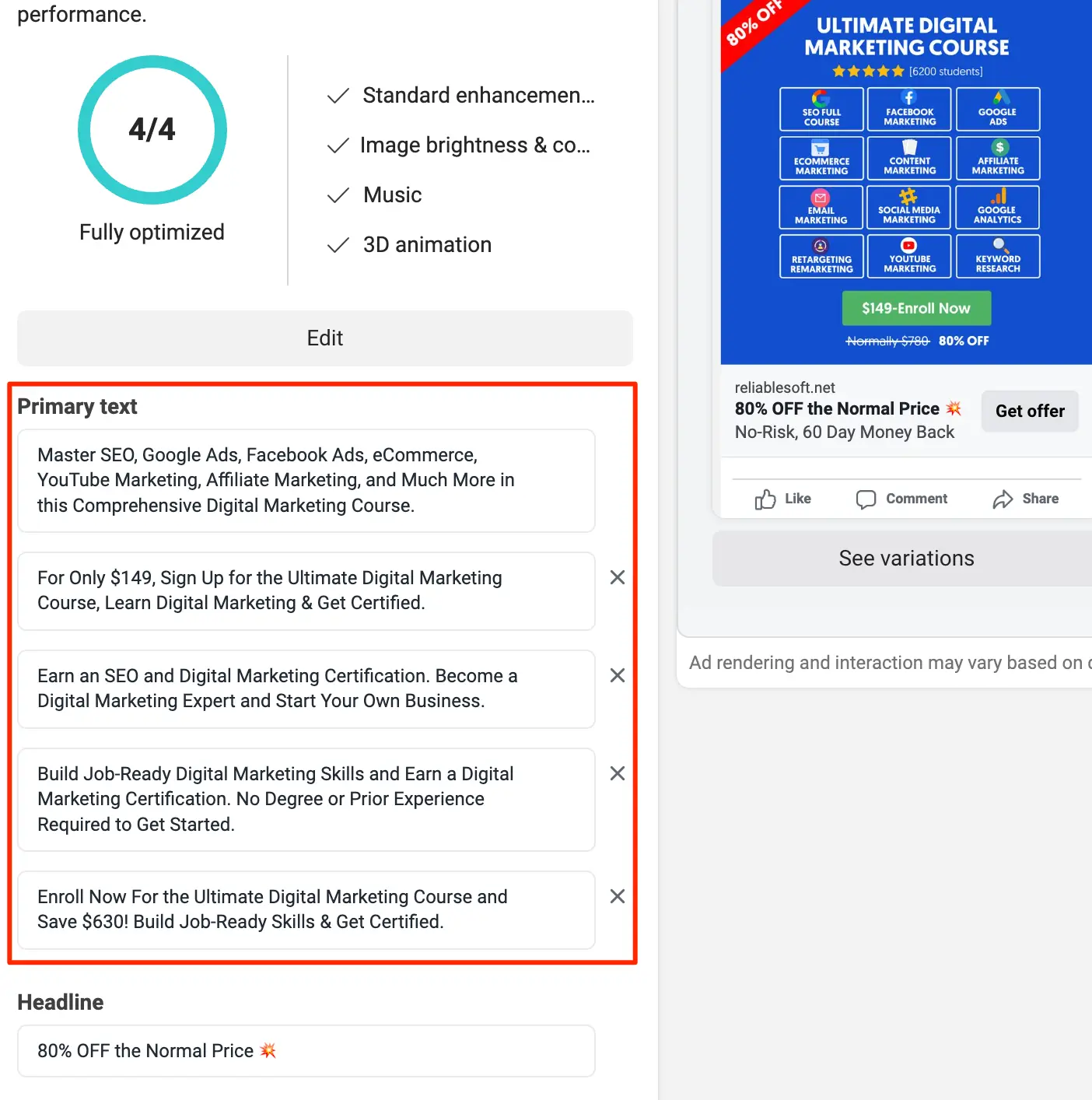
For best results, keep each test running for at least 7 days before taking further action. Try to test ONE element at a time to reach meaningful conclusions.
7. Keep Your Landing Pages Consistent
Your Facebook ads should lead to landing pages consistent with the ad message. This ensures a smooth transition for users and improves the chances of conversion.
This is extremely important and, from experience, something that many business owners neglect. If needed, you should design custom landing pages for your Facebook ads, even if this means not indexing them from search engines, to avoid content duplication issues.
Also, something very important is not to forget that most of your Facebook ads visitors will come from mobile devices, so your landing pages should be 100% optimized to offer a great mobile experience to users.
8. Always Use Retargeting Ads
I’ve mentioned this a couple of times so far, but it’s extremely important. Facebook retargeting ads are the most profitable Facebook ad types you can run.
Facebook's retargeting options allow you to show ads to people who have already interacted with your brand. Use retargeting to remind people of products viewed or abandoned in their cart.
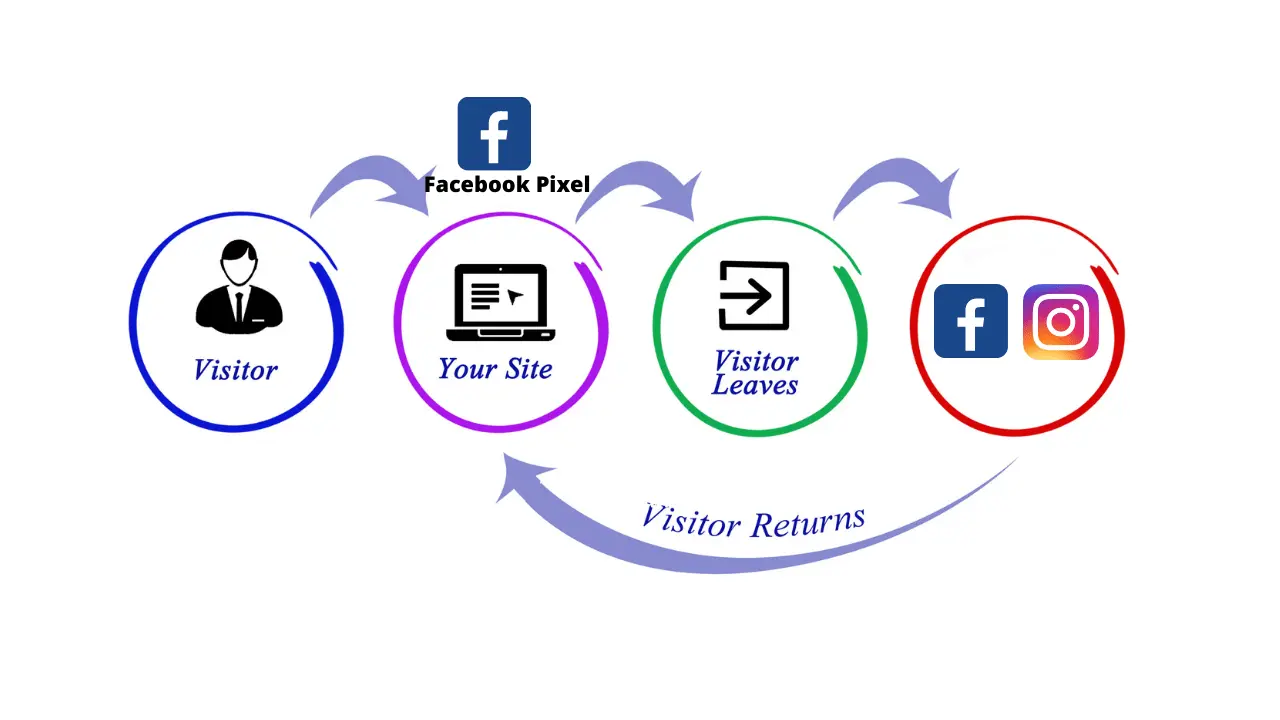
To create a retargeting campaign on Facebook, you first need to decide which website visitors you want to target with your retargeting campaign. You can create audiences based on specific pages they visited, how long they spent on your website, or whether they added products to their cart but didn't complete a purchase.
Then, you need to create Custom Audiences based on the above criteria and use them in the AUDIENCE section of your ad set.
For best results, exclude people who have already converted so that your ads will be shown to people who are aware of your brand but are not yet customers.
9. Monitor Your Results
Monitor the performance of your Facebook ads regularly and adjust your targeting, visuals, and messaging as needed. Use the data to make informed decisions about your ad campaigns and optimize their performance over time.
Keep an eye on key metrics: Track metrics such as click-through rate (CTR), cost per click (CPC), conversion rate, and return on ad spend (ROAS).
These metrics will help you understand your ads' performance and whether they drive the desired results.
Keep track of how much you spend on your ad campaigns and adjust your budget as needed. Make sure that you are not overspending and that you are getting a good return on your investment.
Suppose your cost per result is constantly higher than the acceptable amount (meaning you are running your campaigns at a loss). In that case, you must refine your targeting and test running your ads against a different audience.
If you cannot get the cost below an acceptable amount, you need to hire a Facebook Ads expert and get professional help or switch your budget and advertising efforts to a different digital marketing channel. While Facebook is a great sales channel for many businesses, it doesn’t mean it can work profitably for everybody.
10. Use Promotions and Discounts
The last thing Facebook users want to see in their feeds is another advertisement. Your ads should try to get users’ attention and offer value and incentives for people to take further action.
Your Facebook ads should communicate the unique value your business offers. Highlight key benefits, such as free shipping, special discounts, or a money-back guarantee. Use promotions and discounts to encourage people to buy your products.
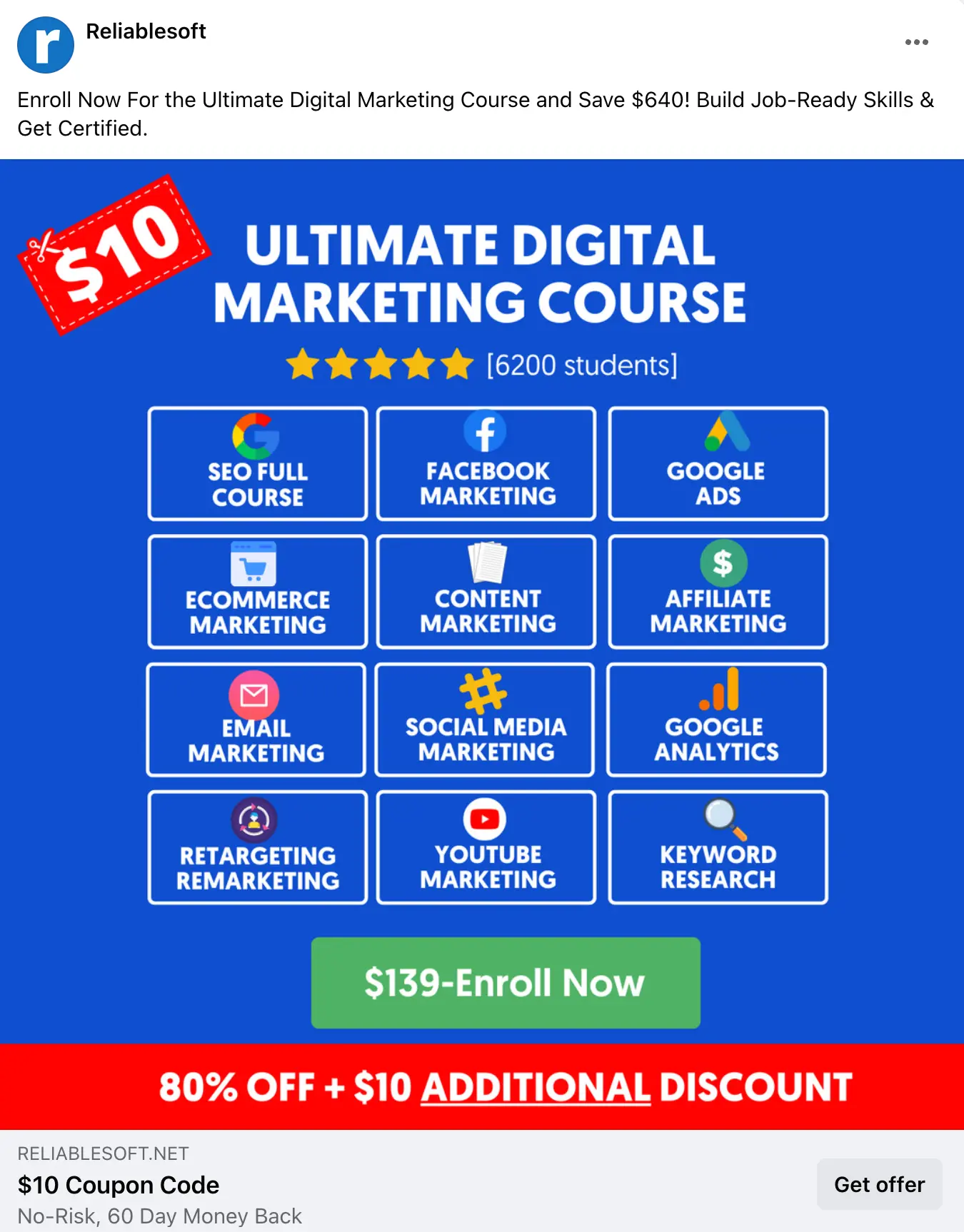
Conclusion
Facebook advertising is a great medium for promoting your products and services to billions of users. While the platform is easy to use, running successful Facebook ads takes time, money, and effort.
If you’re a beginner, the first thing to do is to learn how Facebook Ads work. Many training courses can help you do that fast and effectively. Meta offers online certifications, and there are also great options from third-party providers.
Once you learn the basics, the next step is building and optimizing your Facebook campaigns.
Create your first set of ads, run them for a week, analyze the results, make the necessary changes, and repeat the process until you get a positive return from every dollar spent on Facebook advertising.



